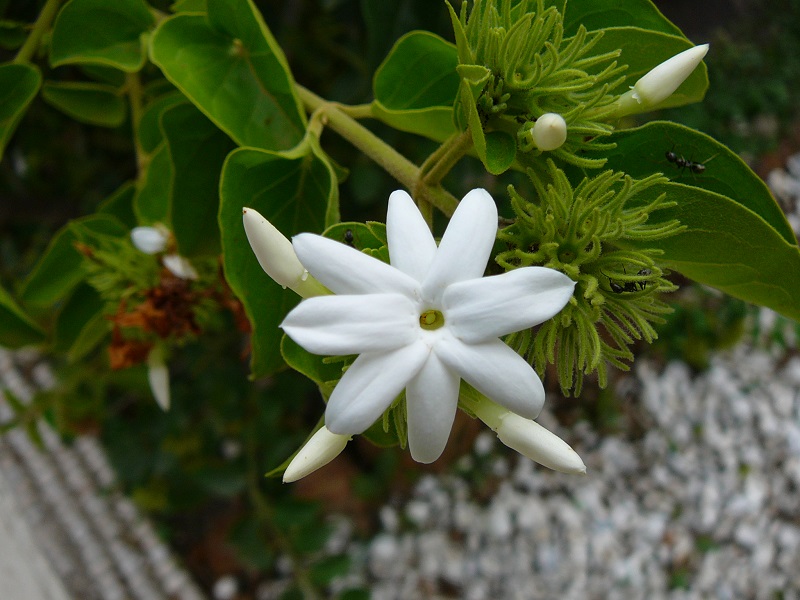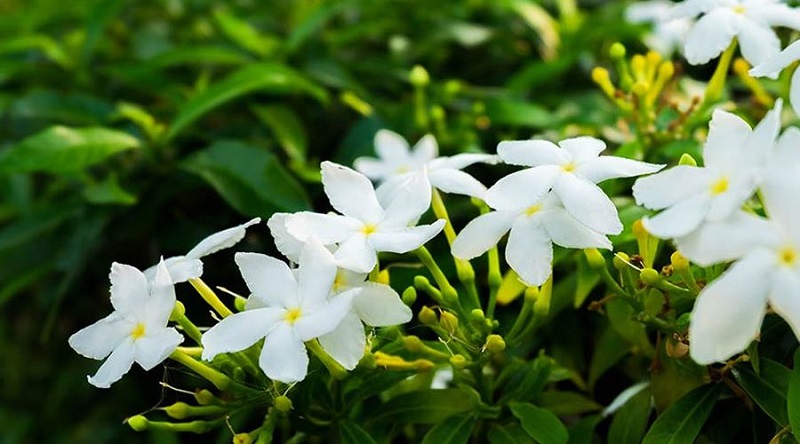Jasminum nudiflorum, commonly known as Winter Jasmine, is a remarkable deciduous shrub celebrated for its vibrant yellow flowers that bloom during the winter months. Originating from China, this hardy plant offers a splash of color when many other plants are dormant. Its early flowering period, ease of care, and versatility make it a popular choice for gardeners seeking to enhance their winter landscapes. In this comprehensive guide, we will explore the botanical characteristics, ideal growing conditions, care requirements, uses, and propagation methods for Winter Jasmine, ensuring you have all the information needed to successfully cultivate this beautiful shrub.
Botanical Characteristics
Appearance and Growth Habit
Jasminum nudiflorum is a vigorous, sprawling shrub that can reach heights of 3-5 feet (1-1.5 meters) and spread 6-10 feet (1.8-3 meters) wide. It features green, pinnate leaves with 3-5 lance-shaped leaflets that turn yellow in the fall. The plant is notable for its bright yellow, tubular flowers that appear in late winter or early spring, often before the leaves emerge. These flowers are about 1 inch (2.5 cm) in diameter and emit a light, sweet fragrance.

Soil and Climate Requirements
Soil: Winter Jasmine thrives in well-draining soil, adaptable to sandy, loamy, or clay soils, provided there is good drainage. The ideal soil pH ranges from slightly acidic to neutral (pH 6.0-7.0).
Climate: This hardy plant can be grown in USDA zones 6-10, withstanding cold temperatures down to -10°F (-23°C). It performs well in full sun to partial shade, making it suitable for a range of climates.
Growing Conditions
Sunlight and Temperature
Sunlight: Winter Jasmine prefers full sun to partial shade. While it can tolerate partial shade, full sun exposure encourages the best flowering and growth. In colder climates, providing full sun will help the plant thrive.
Temperature: Jasminum nudiflorum is cold-hardy and can tolerate frost and temperatures as low as -10°F (-23°C). In milder climates, it can handle a wide range of temperatures, making it versatile for various environments.
Soil and Watering
Soil: The plant requires well-draining soil rich in organic matter. Good drainage is essential to prevent root rot. If your soil is heavy, amend it with compost to improve its structure and fertility.
Watering: Regular watering is important, especially during dry periods. Keep the soil consistently moist but not waterlogged to avoid root issues. Once established, Winter Jasmine is relatively drought-tolerant.
Care and Maintenance
Pruning and Fertilization
Pruning: Annual pruning helps maintain the shape of Winter Jasmine and promotes new growth. Prune the plant after flowering, typically in late spring or early summer. Remove dead or weak branches and trim back to encourage a fuller appearance.
Fertilization: Apply a balanced, slow-release fertilizer in early spring to support healthy growth and flowering. Over-fertilization should be avoided to prevent excessive foliage growth at the expense of blooms.
Pests and Diseases
Pests: Winter Jasmine is generally resistant to pests but may occasionally encounter aphids or spider mites. Regular inspections and treatments with insecticidal soap or neem oil can manage these issues.
Diseases: The plant is relatively disease-resistant but can be prone to fungal infections in excessively wet conditions. Ensure proper spacing and drainage to prevent such problems, and remove any affected plant parts promptly.
Uses and Benefits
Ornamental Value
Winter Jasmine is highly valued for its bright yellow blooms that provide color and interest during the winter months. It is often used as a ground cover, along trellises, or as a cascading plant over walls and containers. Its sprawling growth habit makes it a versatile addition to various garden designs.

Ecological Benefits
Wildlife: The flowers of Winter Jasmine attract early pollinators, such as bees, which are active in winter. This makes it a valuable plant for supporting local ecosystems by providing food for beneficial insects during a time when resources are scarce.
Propagation Methods
Seed Propagation
Winter Jasmine can be propagated from seeds by sowing them in a well-draining seed mix in early spring. Maintain a warm, moist environment to promote germination, which typically occurs within 3-4 weeks.
Cutting Propagation
Softwood Cuttings: Take softwood cuttings in late spring or early summer, applying rooting hormone to encourage root development. Keep the cuttings in a humid environment until roots form.
Layering
Simple Layering: This method involves bending a low-growing stem to the ground and covering it with soil while still attached to the parent plant. Once the stem develops roots, it can be separated and transplanted.
Conclusion
Jasminum nudiflorum, or Winter Jasmine, is a charming and resilient shrub that offers bright, cheerful blooms during the colder months. Its hardy nature, minimal maintenance requirements, and adaptability to various conditions make it an excellent choice for enhancing winter gardens. By understanding its botanical characteristics, growing conditions, and care needs, you can successfully cultivate Winter Jasmine and enjoy its vibrant beauty and ecological benefits year-round. Whether used as an ornamental plant or to support early pollinators, Winter Jasmine is a treasured addition to any garden.
